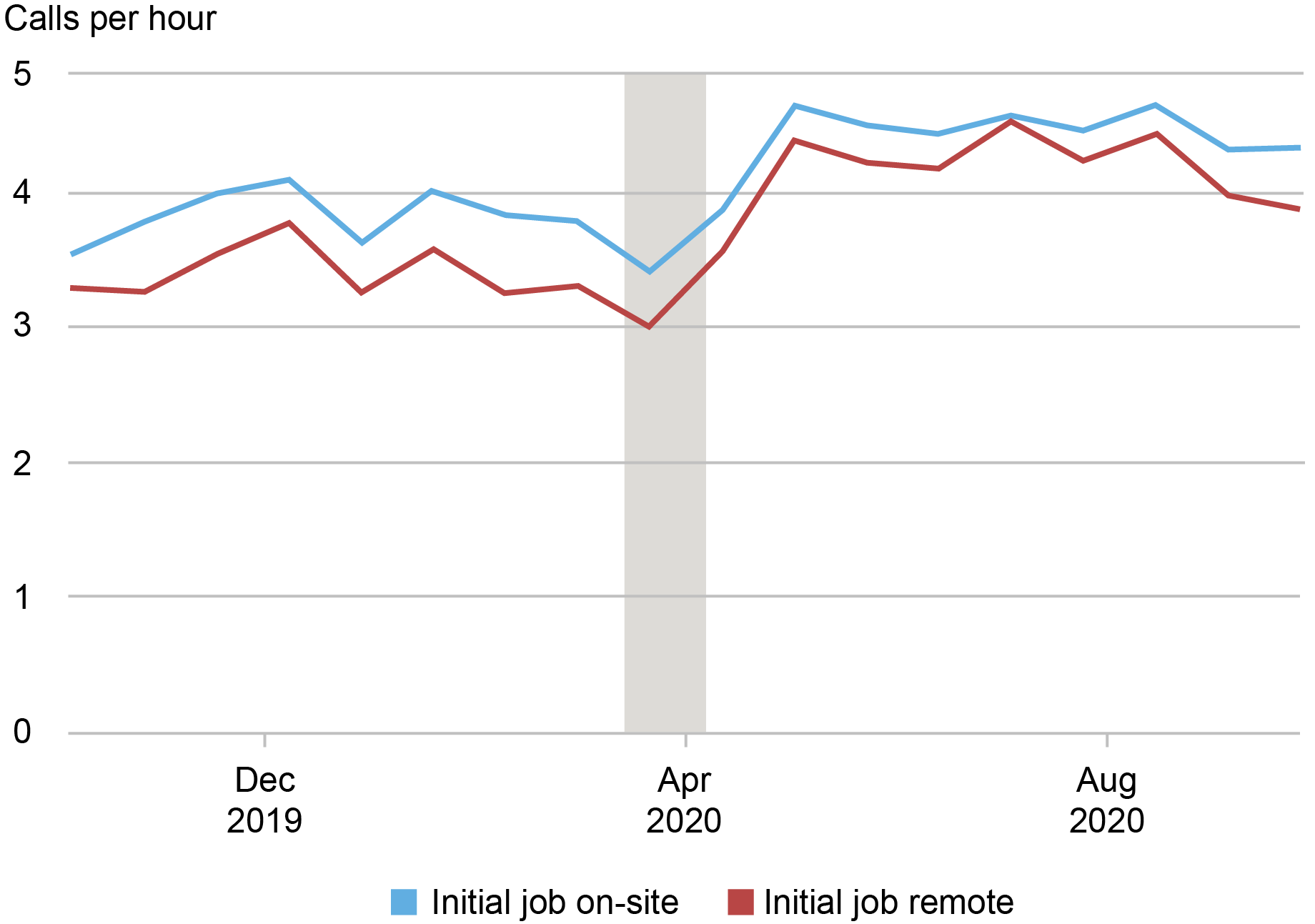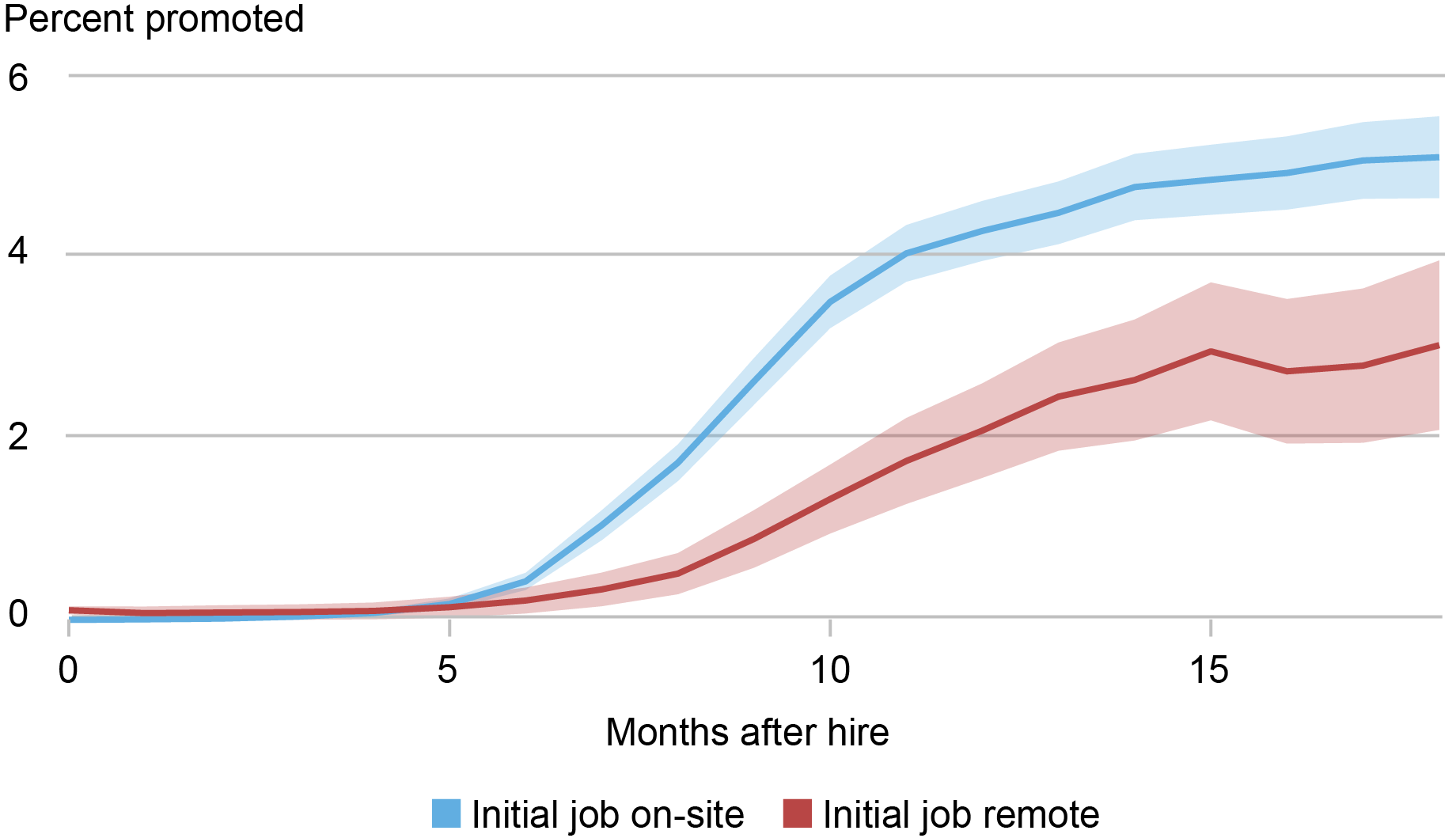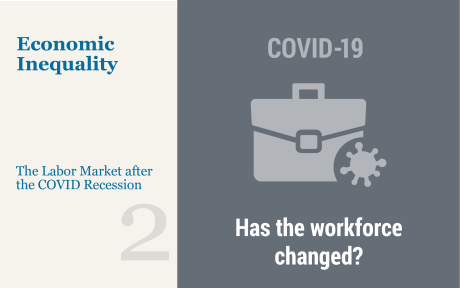
Though some offices have re-opened as the pandemic has receded, many workers have continued to work from home. Recent survey data suggest that workers would like more remote-work days than firms want to supply—a pattern that was evident even before the pandemic. Why have firms been so reluctant to offer remote work? And what will the recent seismic shift in remote work mean for the economy?
A firm may hesitate to offer remote work for two reasons. First, remote work might reduce workers’ productivity. Second, remote work may attract less productive workers to the firm. In the latter case, firms could be stuck in a prisoner’s dilemma: all firms might be better off offering remote work, but any individual firm that offers remote work may disproportionately attract less productive workers.
In a recent working paper, we investigate how remote work affects workers’ productivity and whether less productive workers choose remote jobs. We study American call-center workers at a Fortune 500 retailer that hired both remote and on-site workers before the pandemic. Pre-pandemic, managers expressed reservations about remote workers’ productivity. This intuition was borne out in the data: even when handling calls randomly routed from the same queue, remote workers answered 12 percent fewer calls per hour than on-site workers. The source of the lower productivity, however, remained unclear. It’s possible that any worker would be less productive at home. Yet it’s also possible that less productive workers chose remote jobs.
The office closures brought on by COVID-19 can help disentangle these two possibilities. If remote work reduces productivity, then transitioning to remote work will reduce formerly on-site workers’ productivity, thereby narrowing the gap in productivity. If, however, the initial gap reflects the fact that less productive workers choose remote jobs, then workers who used to be on-site will continue to be more productive when they work remotely, and the gap in productivity will persist once everyone is remote.
Does Remote Work Diminish Productivity?
We find that working remotely reduces call-center workers’ productivity. Once everyone was working remotely due to COVID-19, on-site workers’ productivity advantage over already-remote workers decreased, thereby narrowing the productivity gap, as shown in the chart below. Our estimates suggest that 40 percent of the initial productivity gap in calls handled per hour was due to the fact that remote work reduced productivity.
In our setting, it is crucial to have a control group of already-remote workers since the firm saw an uptick in calls to the service line around COVID-19. Thus, a simple before-and-after comparison would suggest that remote work greatly increased productivity.
The Productivity Gap between On-Site and Remote Workers Narrowed after COVID-19 Office Closures

We find that distractions at home do not appear to account for the negative effect of remote work on productivity. Remote work negatively impacts productivity for both parents and non-parents to similar degrees. We also asked workers about the room in which they worked and found no difference based on whether people worked in a private place (such as a home office or bedroom) or in a shared space (such as a kitchen).
In addition to reducing call quantity, we find that remote work degrades call quality. When on-site workers switched to remote work, they kept customers on hold for longer, and customers were more likely to call back with unanswered questions. This reduction in call quality is driven by less experienced workers, who might have had the most to gain from being able to ask for advice about tricky calls from nearby coworkers and managers.
We further find suggestive evidence that remote work reduces worker training and manager one-on-one time. These differences may help explain the fact that remote workers were less likely to be promoted than their on-site peers before the pandemic, as shown in the next chart. Thus, remote work may not only reduce workers’ productivity in the short to medium term but also stunt workers’ development and career trajectories in the long run.
Remote Workers Were Less Likely to Be Promoted Pre-Pandemic

Who Chooses Remote Work?
Once everyone was off-site, workers who had originally chosen to work remotely were less productive than workers who had originally chosen to be on-site. Indeed, most of the pre-pandemic gap in productivity persisted once everyone was remote, suggesting that 60 percent of the initial gap was due to less productive people choosing remote jobs before the pandemic. Accounting for differences in gender or parental status with respect to who works remotely does not eliminate the persistent productivity differences.
Differences in worker productivity can be difficult to screen for—especially in entry-level jobs. Thus, firms’ concerns that offering remote jobs will attract less productive workers may inhibit the supply of remote work. Using a model of the supply and demand of remote work, we find that firms employ 25 percent fewer remote workers due to concerns over selection into remote jobs. Thus, firms are meaningfully stuck in a prisoner’s dilemma that leads to an underprovision of remote work. If firms could coordinate their remote work policies, fear of attracting workers with lower productivity who want to work remotely would diminish and they would all offer more remote positions.
Implications for a Post-Pandemic World
The lockdowns triggered by the pandemic likely had several effects that could change whether firms allow remote work.
First, if firms previously had misperceptions about the costs of remote work, the pandemic could have helped firms update their understanding of the costs. Indeed, our estimates indicate that remote work should have been more prevalent than it was before the pandemic, suggesting a role for firm misperceptions or fixed costs of adopting remote work.
Second, firms invested in new technologies that may mitigate remote work’s negative effects on worker productivity.
Third, the pandemic may have changed which workers choose remote work. The mass experiment with remote work may have reduced associated stigma and decoupled workers’ choices to be remote from their productivity.
Thus, these changes may permanently narrow the gaps in productivity between remote and on-site workers. To the extent that the pandemic has freed firms from a prisoner’s dilemma of under-provision of remote work, the seismic shift in remote work reflects a lasting positive impact of the pandemic.

Natalia Emanuel is a research economist in Equitable Growth Studies in the Federal Reserve Bank of New York’s Research and Statistics Group.
Emma Harrington is an assistant professor at the University of Iowa Tippie College of Business.
How to cite this post:
Natalia Emanuel and Emma Harrington, “Is Work‑from‑Home Working?,” Federal Reserve Bank of New York Liberty Street Economics, June 20, 2023, https://libertystreeteconomics.newyorkfed.org/2023/06/is-work-from-home-working/
BibTeX: View |
Disclaimer
The views expressed in this post are those of the author(s) and do not necessarily reflect the position of the Federal Reserve Bank of New York or the Federal Reserve System. Any errors or omissions are the responsibility of the author(s).













 RSS Feed
RSS Feed Follow Liberty Street Economics
Follow Liberty Street Economics